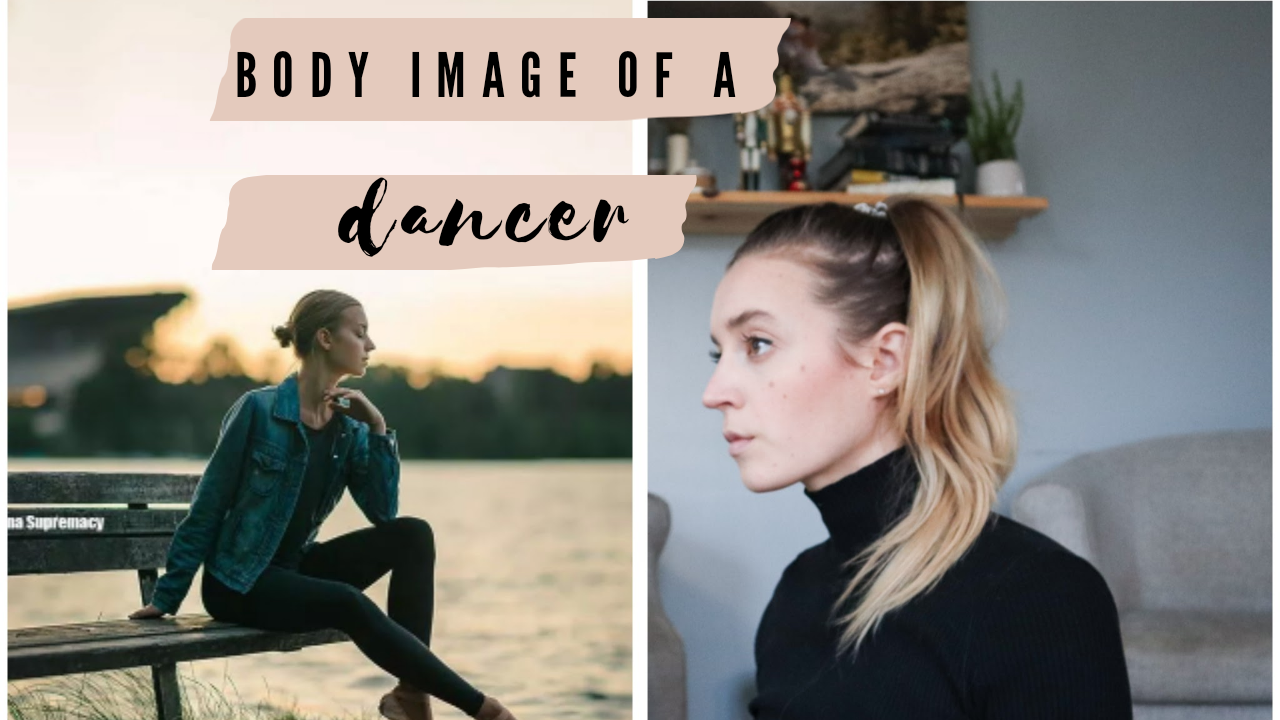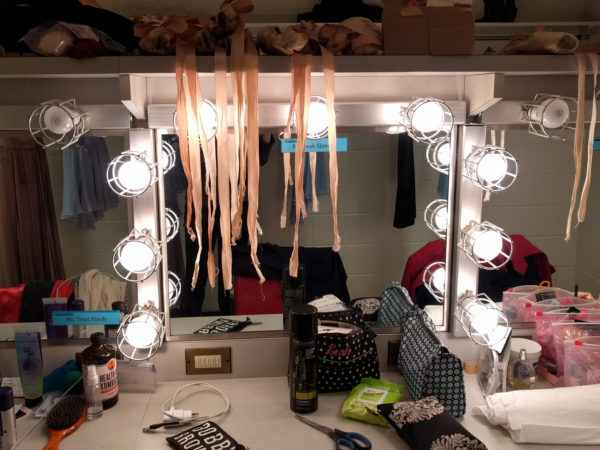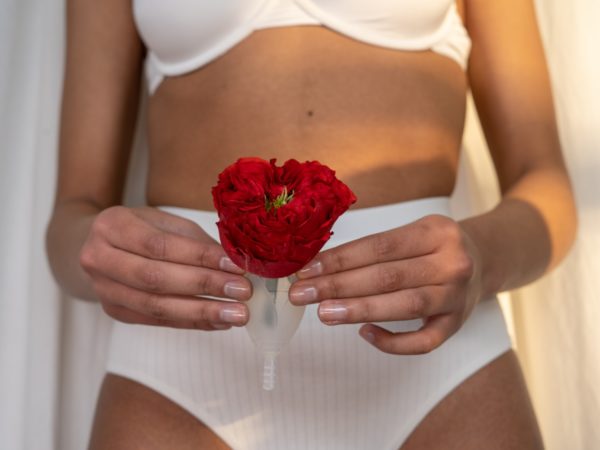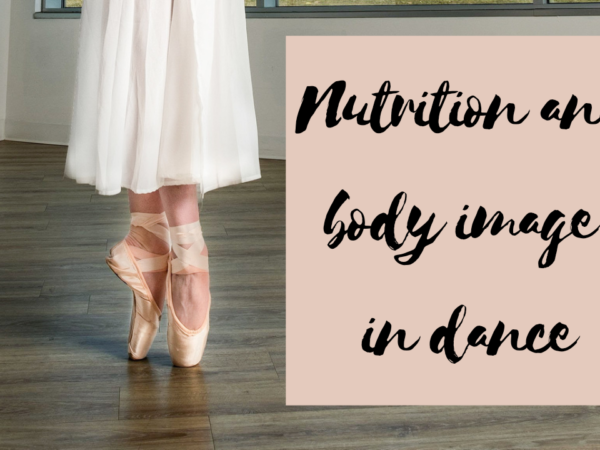Ballet and body image go hand in hand. Whether we recognize it or not, the body image of a dancer is created in the studio. Combine this with body image issues seen in friends, family, and media can create a storm of deeply connected issues that stifle body confidence.
When I discuss intuitive eating and creating a healthy body image, I am always asked, “but what about the high caliber of body that is needed for dancers?”. Basically, this is a nice way of trying to put “well, wait, aren’t these ideas going to encourage dancers to not be fit and lean?”. Our brains are taught to think of cross training and nutrition in terms of body size and shape. It perpetuates this idea that strict dieting and excessive exercise are the only ways to become a top ballerina. Being a “healthy” dancer does not mean physically, mentally and emotionally strong and happy, but purely how you look in a leotard and tights and how rigid and strict you can be with yourself. So, how did we get here?
Acknowledging privilege
Before we talk more about the body image of a dancer, I want to acknowledge that I am mostly able to speak on my own experience as a dancer. But I have body privilege in that I naturally hold a lean shape, I am white, and I do not have any underlying physical impingements that keep me from pursuing highly competitive and demanding physical activity. There are so many issues that many dancers of color face that I have never had to go through. I have also always had access to physical and mental health professionals who have been able to help me on my journey.
This blog post is not going to be able to capture the experience of every single dancer, which is why I want to keep this conversation going. On my YouTube channel, I am planning on having perspectives of other dancers whose journeys were different than mine. Each dancer is going to have a different experience when it comes to the scars they carry from dance, but what we do have in common is this feeling of frustration, doubt, and self-questioning in our ability and in our bodies. I hope that there is also a unifying understanding that how we approach nutrition and body image in dance needs to change.
What is body image
Body image is the perception that a person has of their physical self. It encompasses the thoughts and feelings they experience as a result of that perception. This is the way you SEE yourself, the way you FEEL about the way you look, the THOUGHTS and BELIEFS you hold about your body, and the things you DO in relation to all of these things.
Body image in ballet
The body image of a dancer is so intertwined with messaging inside and outside of the studio because ballet is a visual art form that uses the human body as the expression of art. It perfectly combines movement, athleticism, culture, emotion, and beauty. This also means that we judge dance based on what we see – which are the dancer’s bodies. Our bodies accomplish so many superhuman feats in dance, but where we can get sidetracked is in assuming that for us to present our art in the best possible way, that we have to take on a certain standard of physical attributes.
We are often taught outright or through subtle messaging that we have to do everything in our power to look like a stereotypical dancer. Many of these attributes are up to genetics, like degree of hip rotation, arched feet, and long limbs, which can only be changed to a slight degree. As a result, weight is often spotlighted as the one thing that dancers can and should control. It is much harder to change your physical structure and joint mobility than it is to get smaller, so it is easier and faster to change size. Unfortunately, this often comes with disordered eating patterns, habits of over-exercising, and a poor relationship with food and with your body. When dancers try to control and manipulate their body, it is often against their overall health and well-being.
Success in ballet
What is often not taught to dancers is that a certain body type does not have to be equated with success in ballet. In actuality, when you are watching a dancer, their beauty is not given off by the size of their body, but by their QUALITY of movement. Epaulement, emotion, movement quality, and joy all combine to create the beautiful art of dance. Watching a stick thin but stiff ballerina does not bring the same enjoyment.
We give perfect bodies way too much credit – that they are the only ones capable of being beautiful dancers. But often, this is how the body image of a dancer is formed. Artistry is what captivates an audience and tells the story or evokes emotion. Yes, having the perfect body with crazy extension, insane hyperextension and a curved arch can make pretty lines, but if there is nothing beyond that, it is kind of lacking.
Take the classical ballet Sleeping Beauty. Technically, Aurora is probably one of the hardest leads for a female in any full length classical ballet. Watching a ballerina with a stereotypical ballet body and pristine technique might be beautiful to look at, but it is not memorable. It doesn’t teach or tell anything. You can enjoy it visually, but it might not necessarily be engaging beyond that. Think instead about a dancer who embodies Aurora as a youthful, giving, loving lead. The dancer might be playing with the music in an interesting way, or genuinely connect with the others on the stage in a way that really tells the story. This is what we actually want to watch as dancers and as audience goers. This is what dancing is about.
How we negatively cope with poor body image
Unfortunately, we can get so caught up in what we see in the mirror and in pictures. This is often because we see casting changes, company contracts and attention from dancers and teachers equated to being thin. Many dancers receive compliments from directors, teachers, and peers alike when getting leaner, which gives us positive affirmation to continue on this potentially dangerous tightrope. We are also surrounded by this culture of perfection in dance that perpetuates this “need” to always be in your “best shape”. Often, this is only achieved with unhealthy habits.
Especially when we are younger, many dancers deal with our bodies changing by talking negatively about our own bodies around other dancers. I think some of it can be the need to be complimented when we feel insecure, but some of it stems from this place of feeling like we aren’t allowed to accept our bodies as they are. In spite of the fact that our bodies are going to constantly be growing, changing, and fluctuating.
This really hits home for me when I hear nine and ten year-olds talk negatively about their body size and shape. I will hear them talk about how bad their body looks in a leotard and how they won’t be liked by teachers or cast in the Nutcracker because of this. THEY ARE STILL KIDS! Unfortunately, this degrading language can continue throughout their lifetime, past the studio, and into their adult years as well.
A bit of my story
I once thought that I had to stay a certain size in order to be a good dancer. In fact, I felt like I was only praised in my ability to keep a ballet body and not my actual dancing, and so I was stuck in feeling like I had to look a certain way. The only way I felt confident in my dancing was to be thin. I not only didn’t enjoy dancing anymore, I was constantly tired, injured, and full of anxiety.
I didn’t realize this until I stopped caring so much about having a super flat stomach and started to just think about how much I really did love dancing. Instead, I stopped thinking about how my body looked in a snapshot, but how my dancing would translate. This doesn’t mean that I never struggle with having days where my body image is so-so, but I have the tools now to work through these negative thoughts before they become thought patterns that turn into old habits.
Responsibility of the ballet industry
Whether you are a seasoned professional, or you take dance classes recreationally, the way we are taught about our bodies in dance can be carried with us throughout our lives. I think it is the responsibility of directors, choreographers, teachers, and even dance parents to teach their dancers how to develop a healthy relationship with food and with their body. This is such an important issue that can impact a dancer’s physical, mental, and emotional health for decades.
Change can begin when we have spaces where we can start talking openly about how to develop a healthy body image within arts organizations. It will start with shifting the mindsets of dancers as well as shifting the practices and ideals that teachers and artistic staff hold in regards to a dancer’s body. For real change to occur, body image needs to be addressed as every level of a dance organization.
Trust me, it’s worth it
When looking at uprooting negative body image in the dance world, it can be daunting to try and conceptualize change. But trust me, it’s going to be worth it. So many dancers are becoming passionate about creating spaces dedicated to supporting healthy dancers.
My hope is that the more we talk about unhealthy standards in dance, the more we can begin to change them and make dance a better, safer, and more constructive place for dancers to develop into strong, independent, and well rounded, healthy individuals. In future posts, I will be talking about my personal body image journey as well as tangible steps that dancers can take to develop a healthy relationship with their body.




